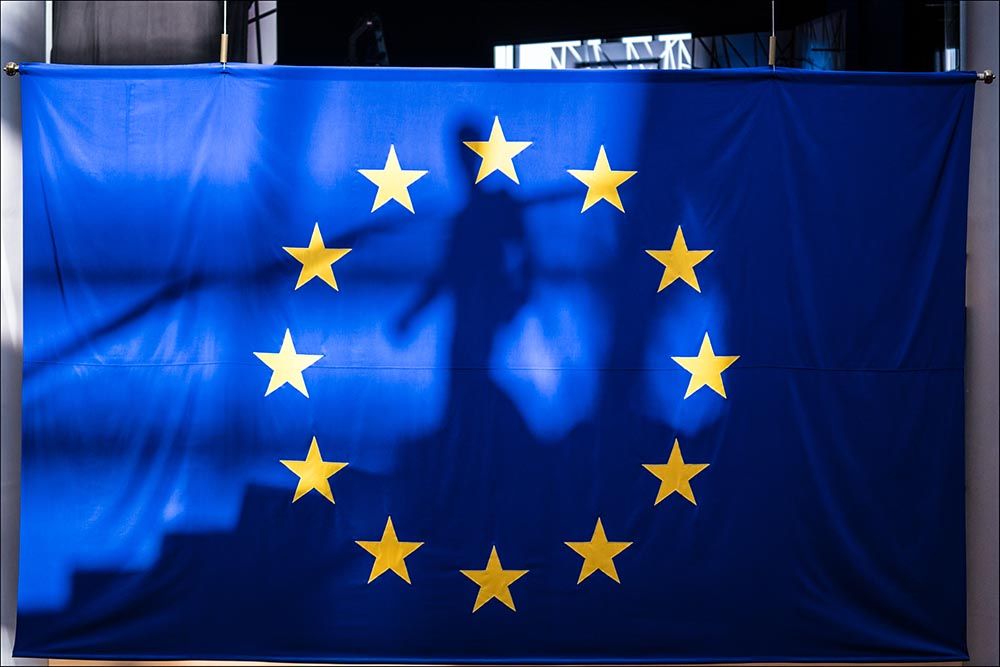Top Forecaster says Euro-Dollar Downside Could be Limited from Here
- Written by: James Skinner
- EUR/USD suppressed by gravity near 2021 low
- But top forecaster suggests downside is limited
- EUR/USD could bottom out in region of 1.1500

Image © European Union - European Parliament, Reproduced Under CC Licensing.
- EUR/USD reference rates at publication:
- Spot: 1.1610
- Bank transfers (indicative guide): 1.1199-1.1280
- Money transfer specialist rates (indicative): 1.1500-1.1547
- More information on securing specialist rates, here
- Set up an exchange rate alert, here
The Euro-to-Dollar exchange rate slipped back beneath 1.16 and was closing in on its 2021 low early this week but newly reiterated, and so far on point forecasts from BofA Global Research suggest that any further declines by the single currency may be somewhat limited.
Europe’s single currency traded as low as 1.1580 against the Dollar in the first Tuesday session of October, taking it close to the 2021 low of 1.1562 set in the fading light of September and in a market that has grown more willing to contemplate bullish ideas about the U.S. greenback in recent months.
This is after a landmark shift in the monetary policy stance of the Federal Reserve in June, which continued in September when Chairman Jerome Powell indicated the Fed could end its quantitative easing programme by the middle of next year and potentially even lift interest rates late in 2022.
“We continue to expect USD appreciation against lower beta FX, in particular EUR. The fact that the market is well below the Fed’s new rate projection reinforces this,” says Athanasios Vamvakidis, head of FX strategy at BofA Global Research.
“The consensus EURUSD forecast has adjusted from 1.25 as the year started to 1.18 this year and 1.20 next year. We stick with our 1.15 EURUSD forecast for this year and the next,” Vamvakidis and colleagues wrote in an end of September review of BofA’s forecasts.
While the Dollar has grown stronger and the Euro has softened in recent weeks, the BofA Global Research team notes that U.S. and other bond yields do not yet fully reflect the extent to which U.S. interest rates could rise once the Fed begins lifting the Fed Funds rate from near zero.
Above: Euro-Dollar rate and U.S. Dollar Index shown at 4-hour intervals.
Secure a retail exchange rate that is between 3-5% stronger than offered by leading banks, learn more.
September’s dot-plot of Federal Open Market Committee members’ forecasts suggested the Fed Funds rate could reach 1.75% or more in 2023 and that it would likely exceed 2% in 2024, which implies a lengthy climb from September’s target range of between 0% and 0.25%.
Meanwhile, European Central Bank guidance suggests a high chance that it wouldn’t have lifted the Eurozone’s -0.50% deposit rate at all by then.
“EUR has weakened so far this fall, consistent with our forecasts,” Vamvakidis says.
“The ECB December meeting is in our view the main known unknown for EUR for the rest of the year. Our call for the Asset Purchase Programme (APP) to replace the PEPP, with a monthly envelope of purchases somewhere in the middle between the two programs, is broadly what markets expect,” he adds.
While the Dollar could yet appreciate further and lead the Euro to set new lows for 2021, Vamvakidis and the BofA Global Research team are looking for the Euro-Dollar rate to remain close to the 1.15 level through year-end and into 2022.
This outlook doesn’t preclude or prevent minor and short-lived deviations below that level, but does suggest that any further losses seen by the single currency could be quite limited through the remainder of 2021, and even next year too.
{wbamp-hide start}
{wbamp-hide end}{wbamp-show start}{wbamp-show end}
“We expect gradual EURUSD appreciation to 1.20—the lower end of the equilibrium range—only in 2023. In general, after near-term USD strength and a mostly flat 2022, we look for a reversion toward longer term equilibrium afterward,” Vamvakidis wrote in a note to clients last week.
These forecasts are noteworthy not only because of what they imply about the outlook for the single currency but also because of BofA Global Research’s forecast track record, especially throughout 2021.
The single currency entered the year around 1.2236 but after clocking a January 06 high of 1.2350 it declined quickly to end the quarter around 1.1723, making for a median average of a little over 1.20 that was in line with the bank’s outlook.
But having seen the Euro on course for that projection in the middle of the opening quarter, BofA Global Research was quick to downgrade forecasts for the remainder of 2021 and began tipping the single currency to slip to 1.18 by June, 1.16 in September and 1.15 by year-end.
With the exception of the year-end projection - which has almost been seen in the early days of October, each of these forecasts has been on money and the bank showed conviction by standing firm behind them throughout the year despite a second quarter scare in which Euro-Dollar broke back above 1.20 to almost reach the 1.23 handle by late May.
Above: Euro-Dollar rate shown at daily intervals with major moving-averages.







